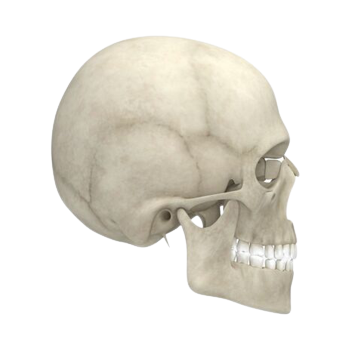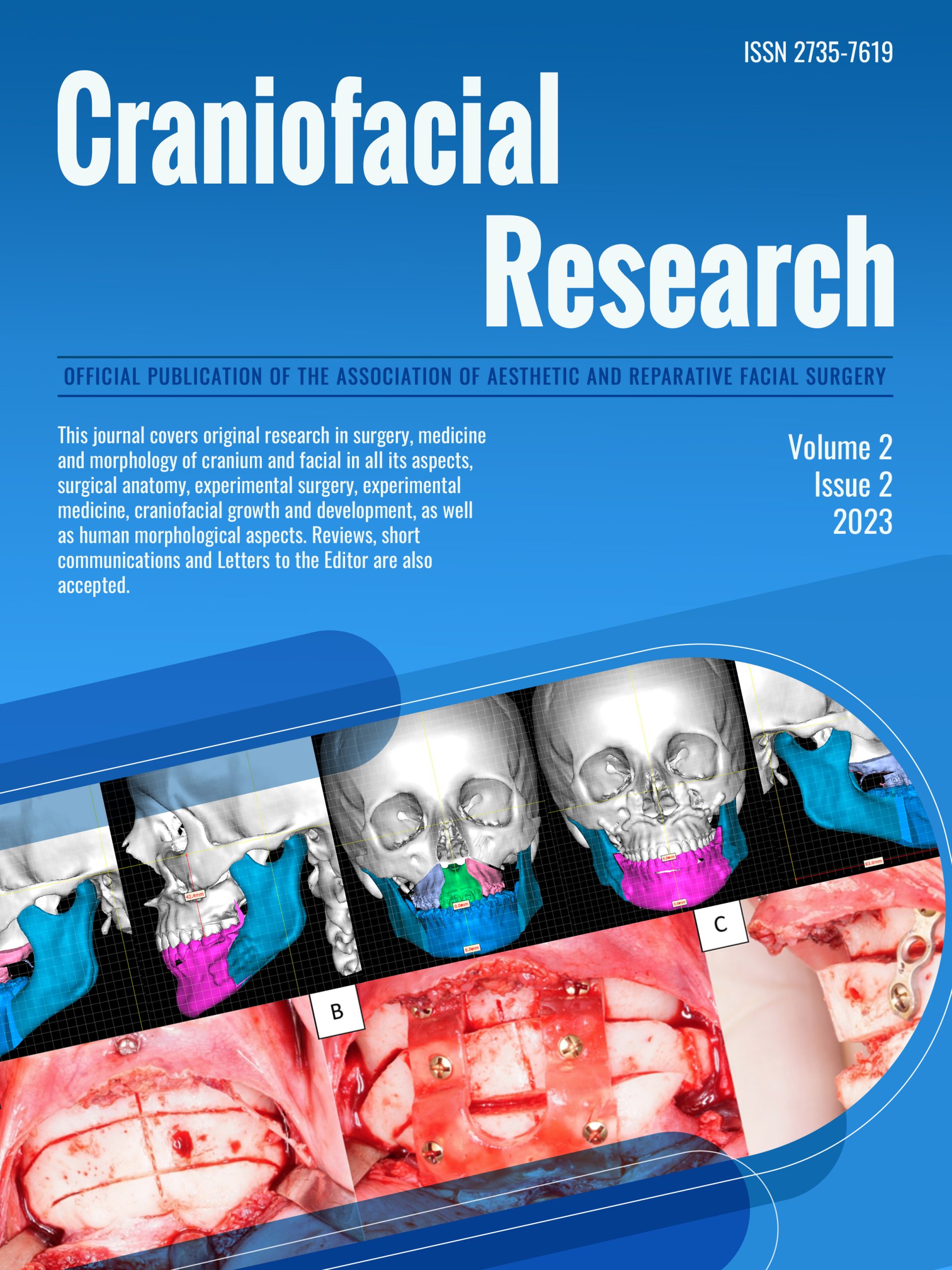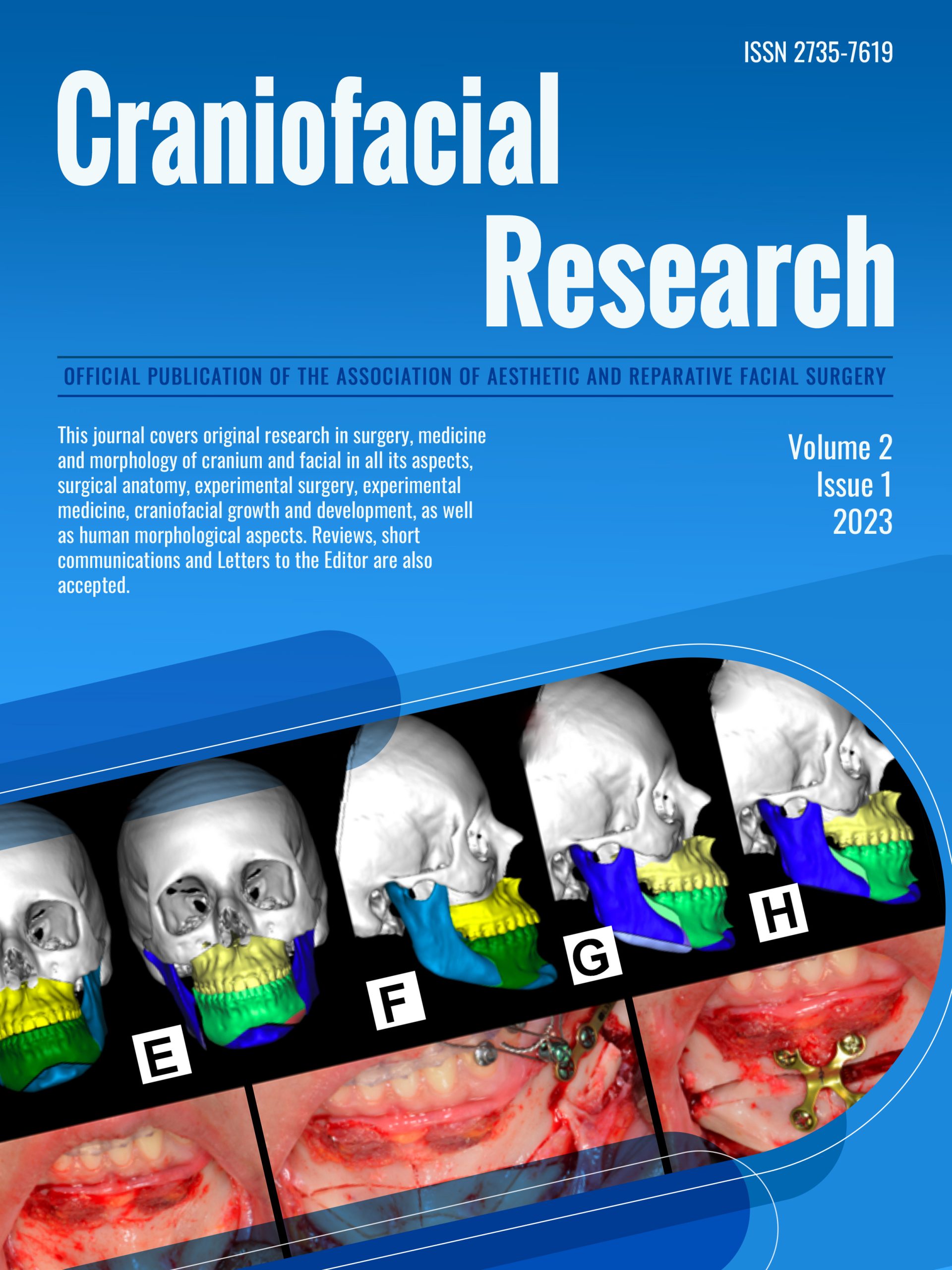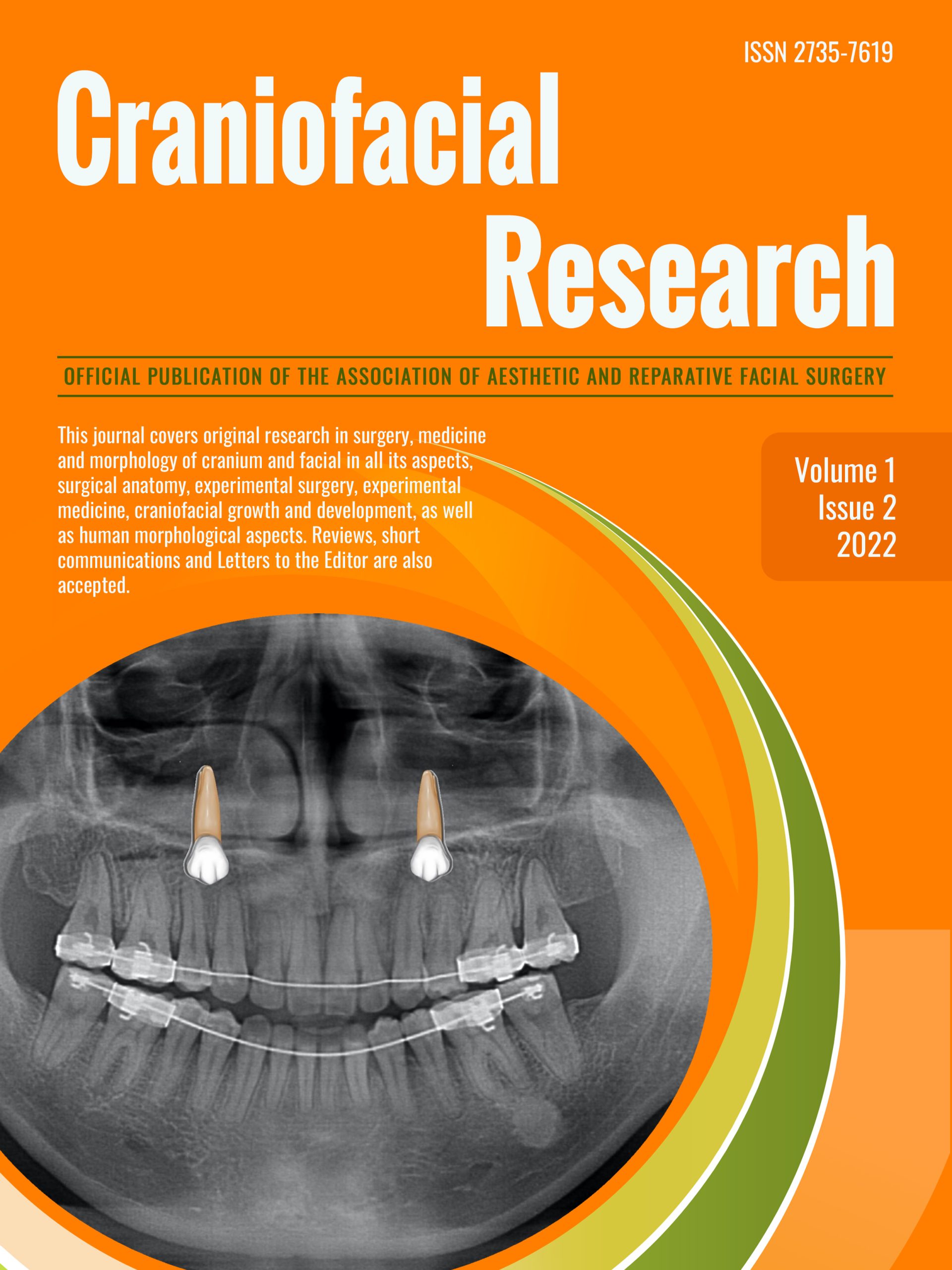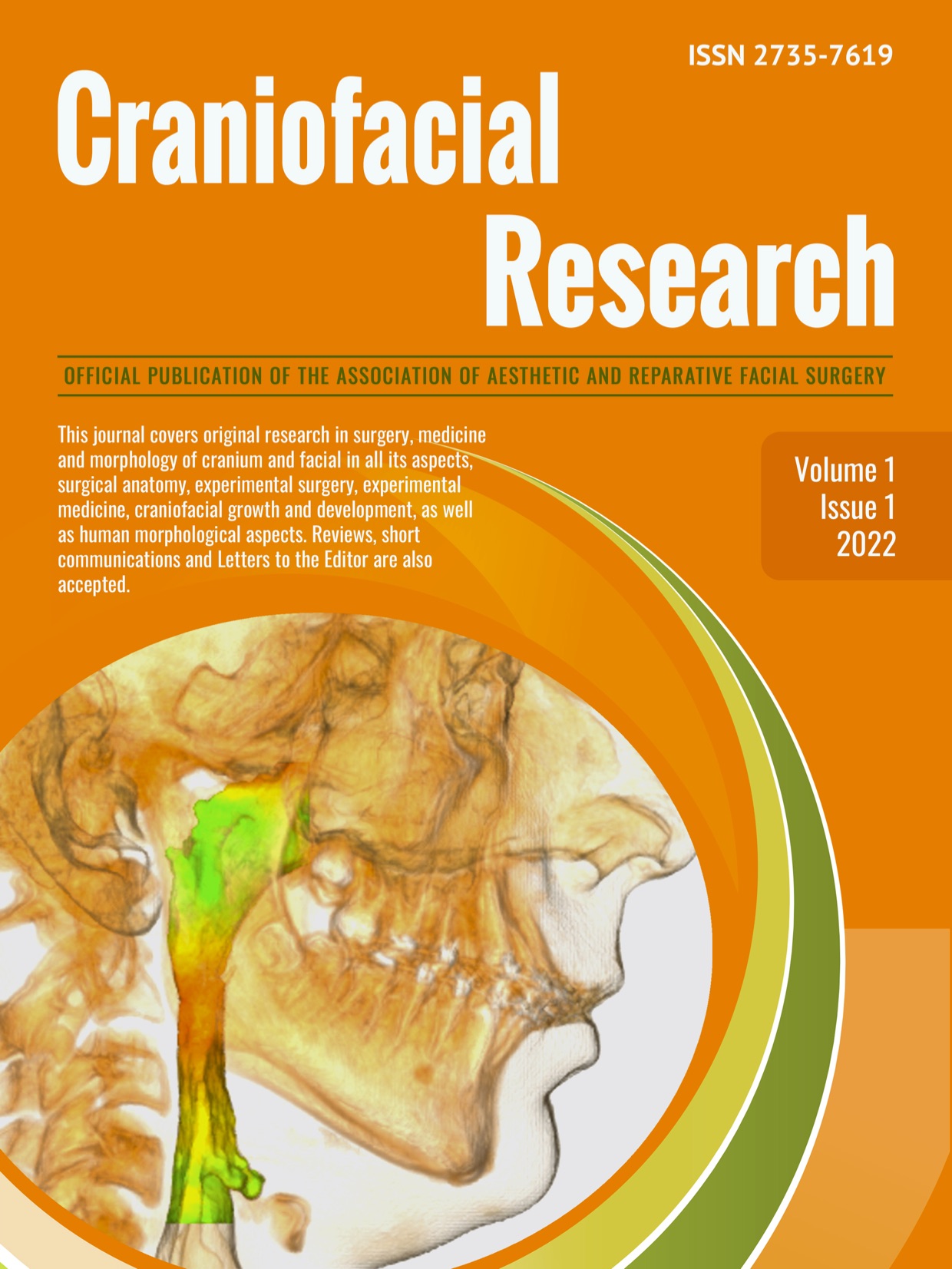Craniofacial Research is a quarterly publication that aims to disseminate original research and research methods related to surgery, medicine, and cranial and facial morphology. It welcomes submissions on a wide range of topics, including surgical anatomy, experimental surgery, experimental medicine, craniofacial growth and development, and human morphological aspects. In addition to research articles, the journal also accepts reviews, short communications, and letters to the editor. All articles are subjected to rigorous evaluation by independent expert reviewers..
Craniofacial Research is a quarterly publication that aims to disseminate original research and research methods related to surgery, medicine, and cranial and facial morphology. It welcomes submissions on a wide range of topics, including surgical anatomy, experimental surgery, experimental medicine, craniofacial growth and development, and human morphological aspects. In addition to research articles, the journal also accepts reviews, short communications, and letters to the editor. All articles are subjected to rigorous evaluation by independent expert reviewers..
Most visited post
- 624 viewsRotational flap of the sternocleidomastoid muscle as an alternative in mandibular reconstructionIvan González Díaz Arturo de Jesús Chávez Caballero
El músculo esternocleidomastoideo se localiza en la región late- ral del cuello. Su irrigación procede de las arterias occipital, tiroidea superior, carótida externa y supraescapular. Su inervación lo da el nervio accesorio que puede o no penetrar el músculo. El colgajo rotacional de esternocleidomastoideo fue descrito por Jianu en 1909, para manejo de parálisis facial. Utilizado por Owens desde 1955 para cubrir defectos del tercio inferior de la cara. La mandíbula es una estructura esencial del esqueleto facial y la mejor opción para su reconstrucción es la utilización de colgajos libres microvascularizados, sin embargo, ciertas condiciones pueden inhabilitar dicha opción (condición sistémica o vascular, radiación). La utilización del colgajo rotacional de esternocleidomastoideo en conjunto con la hemimandibulectomía trae consigo la ventaja funcional y estética. Permite obtener simetría, inclusive rehabilitación protésica debido al proceso de fibrosis que sufre el músculo. La reconstrucción ideal debe de sustituir todos los planos, lo cual no siempre es posible, por lo cual se deben de determinar diferentes alternativas que sean menos invasivas, como el presente ejemplo del colgajo rotacional de esternocleidomastoideo que es de gran ayuda para lograr simetría y evitar la exposición del material de osteosíntesis. El colgajo rotacional del músculo esternocleidomastoideo es una alternativa importante para mejorar el resultado estético y funcional del paciente que conlleva algún tipo de resección mandibular.
PALABRAS CLAVE: Colgajo rotacional, músculo esternocleidomastoideo, colgajo libre microvascularizado
How to cite
GONZÁLEZ DI, CHÁVEZ CAJ. Rotational flap of the sternocleidomastoid muscle as an alternative in mandibular reconstruction. Craniofac Res. 2022; 1(1):23-29.
- 589 viewsSequelae treatment of cheilorhinoplasty using hyaluronic acidAndres Gaete Navarro Carlos Avendaño Mendoza Edgrado Pineda Taladriz
Since the discovery of hyaluronic acid (HA) and its multiple biological functions, it has awakened interest in different areas of medicine, such as ophthalmology, rheumatology and mainly dermatology and cosmetic surgery, among other specialties, with some clinical applications. Among the non-surgical regenerative and reconstructive facial procedures, HA dermal filler is one of the most used nowadays, since it performs a supplementary task in the regeneration and healing of tissues, by providing a structure that facilitates cell growth. The cleft lip and palate (FLAP) are the most prevalent congenital craniofacial defects, where patients with FLAP may present certain lip asymmetries even after surgical treatment with multiple surgeries, which could lead the patient to various psychological disorders. The biological characteristics, the safety and the almost null adverse effects include the HA as an excellent alternative for facial filler helping the aesthetics, functionality and psychological well-being of the patient through a less invasive and non-surgical process. The aim of this article is to present a clinical case with the use of injectable HA to correct the volumetric and aesthetic lip asymmetries produced in the post-surgical rehabilitation of patients with fissures and discusses its use.
KEY WORDS: Hyaluronic acid, dermal filler, cleft lip, cleft palate, facial aesthetics.
How to cite
GAETE NA, AVENDAÑO MC, PINEDA TE. Sequelae treatment of cheilorhinoplasty using hyaluronic acid. Craniofac Res. 2022; 1(1):13-17
- 561 viewsLe Fort I osteotomy to treat recurrent pleomorphic adenoma and facial deformityLuciano H. F. Lima Eder A. Sigua-Rodriguez Douglas R. Goulart Sergio Olate Márcio de Moraes
Pleomorphic adenoma is a benign lesion of the salivary glands. The most common intraoral site is the palate, with tendency to affect females between the fourth and seventh decades of life. The most reported treatment for this lesion is the surgical removal. Therefore, the aim of this report was to present the case of a 31-year-old female patient who presented a recurrence of pleomorphic adenoma and facial deformity. Recurrence was observed 22 year after first surgical treatment. Tumor involved the palatal area, nasal floor and maxillary sinus; the patient showed an augmented vertical growth of the maxilla and mandibular retrognathia with a previous compensatory orthodontic treatment. The treatment included Le Fort I osteotomy for enucleation of the tumor, upper reposition of the maxilla and a chin osteotomy for advancement. 5 year follow-up show a stable result with no recurrence. Diagnosis and treatment strategies are discussed. We concluded that this treatment is stable; Le Fort I osteotomy can help to treat the tumor and facial deformity at the same time.
KEY WORDS: Salivary Gland, tumor, orthognathic surgery, pleomorphic adenoma.
How to cite
LIMA LHF, SIGUA-RODRIGUEZ EA, GOULART DR, OLATE S, DE MORAES M. Le fort I osteotomy to treat recurrent pleomorphic adenoma and facial deformity. Craniofac Res. 2022; 1(1):30-35.
- 561 viewsAnalyses of the hyoid bone position in orthognathic surgeryVíctor Ravelo; Marcelo Parra & Sergio Olate
The position of the hyoid bone is related to vi- tal functions. The aim of this research was to analyze the change in the position of the hyoid bone related to the surgical movement in orthognathic surgery. 52 subjects were included; the diagnosis was determined according to facial analysis, being identified as class II or class III facial deformity. The subjects were treated by maxillary and mandibular surgery without chin surgery; cone beam computed tomography were realized pre-surgical and post-surgical to perform the analyses. Statistical studies was according to the type of va- riable considering a value of p<0.05 to obtain significant differences. The results demonstrated changes in the position of the hyoid bone at different levels; in class II subjects a significant change was observed in the vertical position of the hyoid bone and there was a rise of 4.45 mm (p=0.001); in class III subjects, no significant relationships were observed in terms of horizontal or vertical position. The transverse distance showed significant changes, reducing by 3.62 mm in the post-surgical stage (p=0.008). It is possible to conclude that orthognathic surgery causes changes in the location of the hyoid bone.
KEY WORD: Hyoid bone, orthognathic surgery, osteotomy
How to cite
RAVELO V, PARRA M, OLATE S. Analyses of the hyoid bone position in orthognathic surgery. Craniofac Res. 2022; 1(1):1-6.
- 533 viewsTemporomandibular joint replacement. Criteria for indication and follow-upSergio Olate Víctor Ravelo Claudio Huentequeo Alejandro Unibazo
The temporomandibular joint (TMJ) is a complex structure in the craniomaxillomandibular area. Its pathological conditions show deficiencies at different levels, leading to the replacement in some cases. The objective of this article is to analyze the current indication, criteria and follow-up conditions of these patients. A narrative review was carried out, identifying the main indications for the use of TMJ prostheses and the evaluation of different criteria currently reported in the international literature; the versatility of using standard prostheses and custom prostheses is also discussed. It is concluded that the replacement of the TMJ show indications and relevant criteria that must be evaluated; getting the most beneficial treatment for our patient should be a primary criterion in controversial indications.
KEY WORDS: Temporomandibular joint, prosthesis, orthognathic surgery.
How to cite
OLATE S, RAVELO V, HUENTEQUEO C, UNIBAZO A. Temporomandibular joint replacement. Criteria for indication and follow-up. Craniofac Res. 2022; 1(1):36-44.
